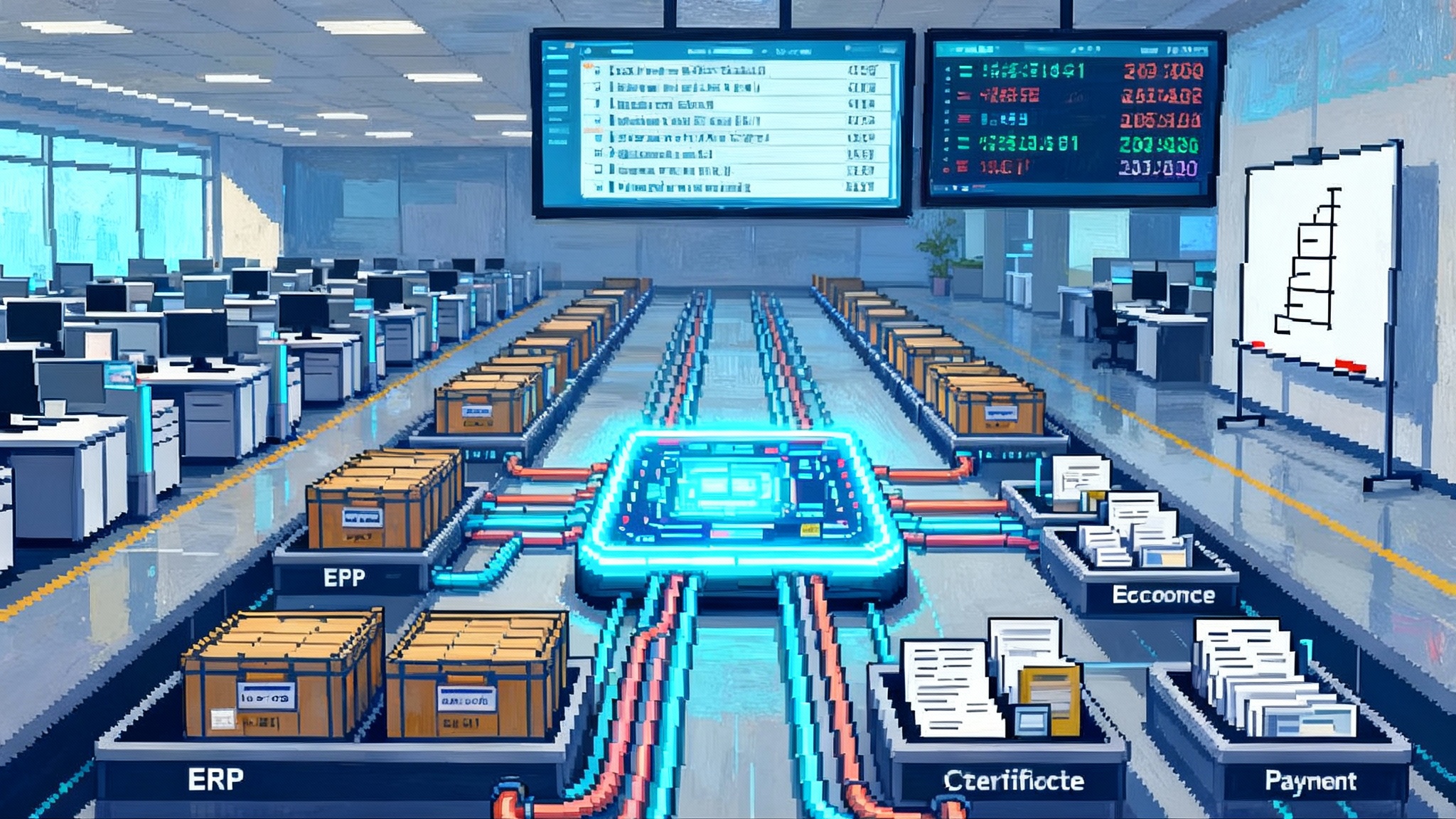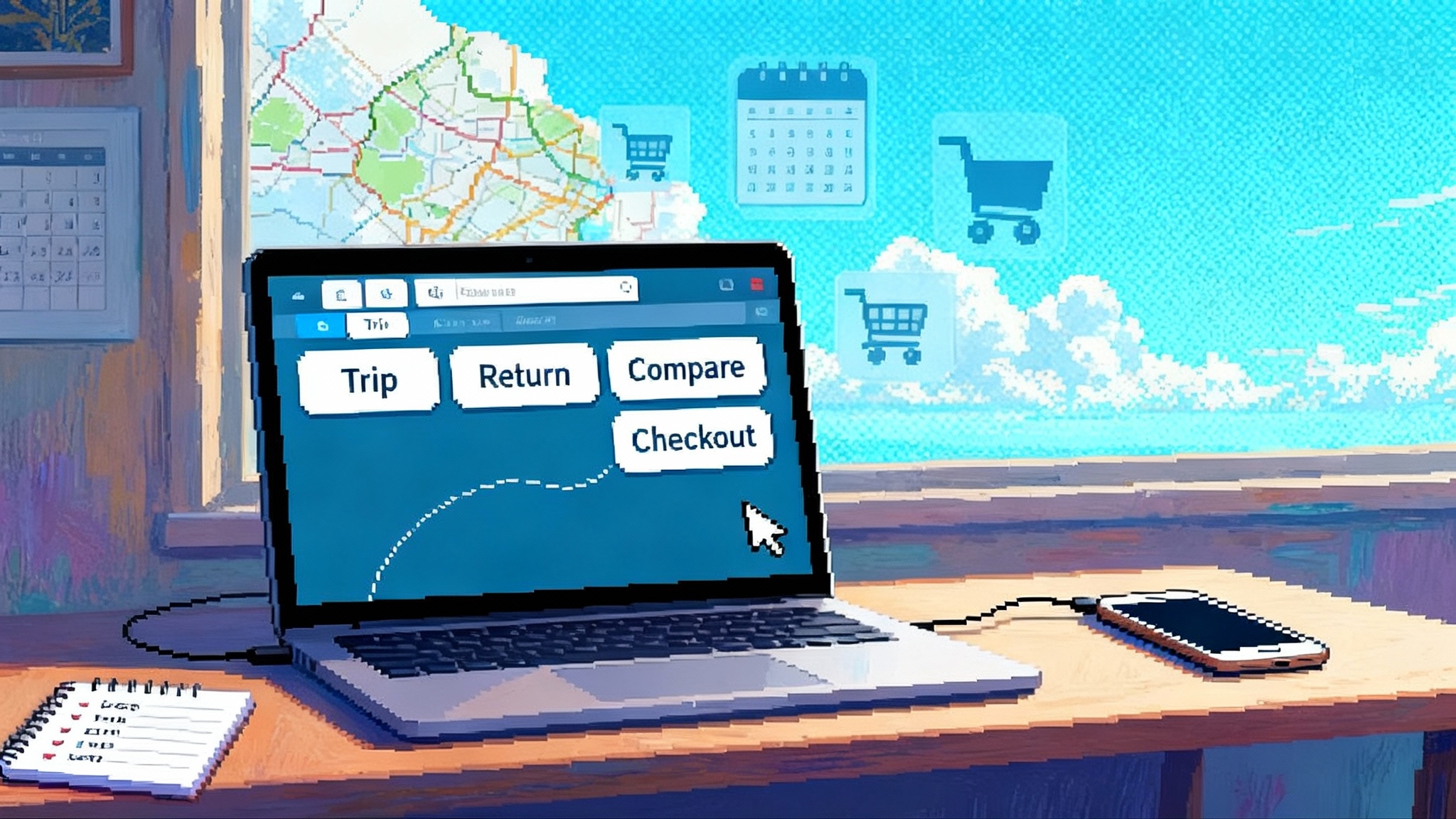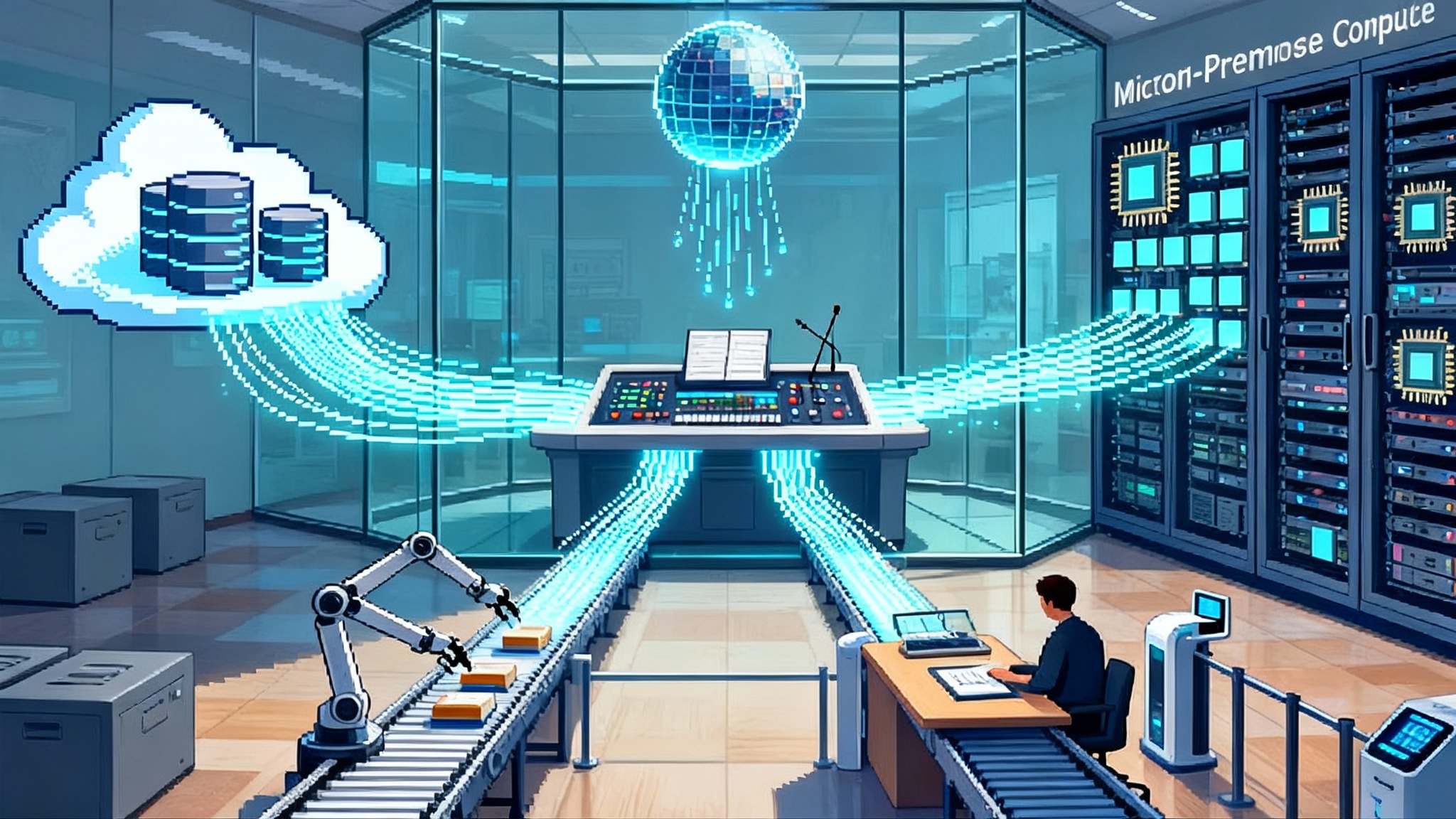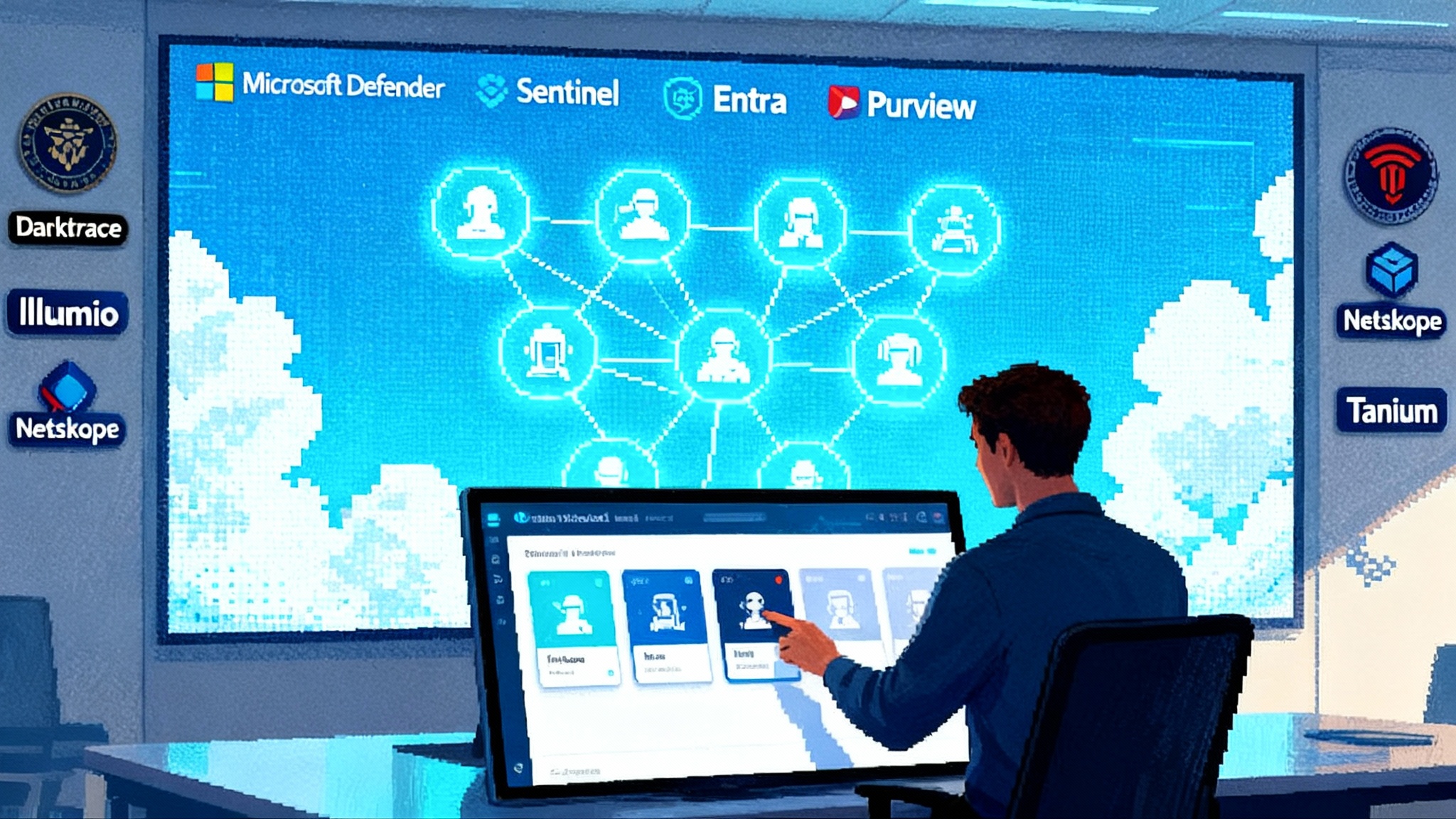Avalara’s Agentic Compliance Turns Copilots into Operators
Avalara’s September 30 launch marks compliance as AI’s first scaled beachhead. Here is why tax work is moving from copilots to operators, and what this unlocks for finance teams and startups.

The moment compliance became agentic
On September 30, 2025, Avalara announced its new platform, Agentic Tax and Compliance, and did so with a clear claim: compliance work should be executed by agents, not just assisted by chatbots. The company describes a stack that blends private large language models with domain-specific small language models, a deep library of constantly updated rules, and native ties into enterprise resource planning systems and ecommerce platforms. The launch sets an anchor for something that has been building all year. In regulated domains where the cost of error is high and the playbook is thick, agents finally have a home. See the announcement in Avalara’s newsroom via Avalara unveils Agentic Tax and Compliance.
Why compliance is the beachhead for vertical agents
Agentic AI thrives where three conditions line up: clear rules, abundant structured data, and predictable endpoints. Tax and regulatory work checks all three boxes.
- Clear rules. The underlying logic is codified in statutes, bulletins, forms, and jurisdictional tables. That creates a well-defined target for machine reasoning. The rules change often, which is hard on humans, but it is tractable for machines that can subscribe to change feeds and refresh decision trees.
- Abundant structured data. Invoices, product catalogs, purchase orders, general ledger entries, and bank feeds create a rich data spine. The inputs may be messy, but they are regular enough to parse and reconcile.
- Predictable endpoints. A return is either filed or not. A payment is remitted or not. A certificate is valid or not. The binary nature of outcomes is tailor made for agents that can plan, act, and verify.
Compliance also carries a strong business case. Errors trigger penalties. Cycle time matters because filings and remittances are calendar bound. This is not a flashy demo category. It is a cost and risk reduction machine.
From copilots to operators
For the last two years, many companies shipped copilots. These systems suggested tax categories, drafted emails to customers about missing exemption certificates, or highlighted anomalies in returns workbooks. Helpful, but still a human doing the heavy lifting.
Execution-grade autonomy needs more than a general-purpose chatbot. It needs a composite system that looks like this:
- Domain-specific small language models. A small language model is trained on a tightly scoped knowledge base, such as sales tax rules by jurisdiction, product taxability matrices, and filing form instructions. A small language model is nimble, easier to control, and less likely to drift. Think of it as a specialist who only studied one field and never pretends otherwise.
- Private large language models. A private large model brings reasoning and composition. It plans multi-step workflows, drafts notices, or builds a schedule of adjustments. Kept in a private tenancy with data isolation, it respects enterprise boundaries.
- Deep rules content. This is the flight manual. A living corpus of thresholds, form changes, mandate introductions, and country-specific regimes like e-invoicing in Europe and live reporting in Latin America. Without this, even the best model is guessing.
- Native integrations. Direct ties into enterprise resource planning, accounts payable, ecommerce, and payments systems. No swivel chair. The agent reads transactions at the source, writes back results, and leaves a complete audit trail.
Avalara’s pitch is that all four parts now exist in one place, and that is what turns a copilot into an operator. Instead of suggesting what a human should do, the agent reads the ledger, classifies line items, applies the correct jurisdictional logic, prepares filings, and routes exceptions for approval. After approval, it executes the filing and remittance, then posts the receipt and updates the general ledger.
A simple picture of the architecture
Picture a busy logistics hub. The private large language model is the dispatcher that plans routes and resolves jams. The small language models are the forklift operators who know each aisle by heart. The rules content is the warehouse map that tells you where every pallet belongs, down to the bin. The integrations are the loading docks, each a reliable connection to a supplier or customer system. Agents move through this hub with pick lists and checklists. They do not improvise. They confirm each scan and record each handoff.
Avalara’s announcement mentions use of the Model Context Protocol to connect agents to tools, a private model layer for isolation, and proprietary small models tuned on compliance data. For more on how agent tooling standardizes these links, see our take on the Model Context Protocol going mainstream. The outcome is not a new user interface. It is a new operating model where the system initiates work, not just responds to it.
A broader verticalization trend
Avalara is not alone. In July, Thomson Reuters introduced a pair of agentic applications for tax professionals, built on its agentic platform and powered by its CoCounsel assistant. The emphasis is similar: end-to-end workflows, explainable outputs, and human review where needed. You can read the announcement via Thomson Reuters agentic applications.
Intuit, meanwhile, rolled out a virtual team of agents inside QuickBooks on July 1, 2025. These agents automate bookkeeping, bill pay, receivables, and cash flow coaching. While the emphasis is small business operations rather than tax rules content, the direction is consistent. We also explored how established automation is evolving in UiPath turning RPA into agents.
Put these moves together and a pattern emerges. The first real business at scale for agents is in back office and regulated workflows. The winning formula is specialized models plus deep content plus trusted integrations.
What execution-grade autonomy actually means
It is tempting to call anything that runs without a prompt autonomous. That bar is too low for regulated work. Execution-grade autonomy demands seven things:
-
Deterministic boundaries. For any task, there is a contract for what the agent can and cannot do. Example: prepare a return and compute liability, but do not submit without a human approval unless the variance is below a configured tolerance.
-
Typed inputs and outputs. Every step reads and writes structured artifacts. For example, a return draft is a typed object with fields, provenance, and validation status. Free text explanations are added as annotations, not as the core payload.
-
Policy-aware planning. The plan is not only a chain of tools. It is a policy tree. If a filing jurisdiction changes form versions mid cycle, the agent routes the work to a human reviewer and attaches the change notice.
-
Dual logging. There is an execution log for technology teams and an audit log for compliance teams. The audit log is immutable, human readable, and aligned to regulator expectations. This mirrors the emerging agent observability control plane.
-
Separation of duties. The agent respects roles. One agent may prepare drafts. Another submits after approval. Access control is not an afterthought.
-
Simulation-first rollouts. Before any agent is allowed to run in production, it must pass scenario packs based on real edge cases. For tax, that means mixed-product baskets, multi-jurisdiction events, and form version changes.
-
Live exception handling. Exceptions are routed with context. The human sees the plan, the data, the rule references, and can approve, modify, or block. The system learns the disposition for next time.
Native integrations change the economics
Compliance work is never a single app. It is a set of flows through systems like NetSuite, SAP, Microsoft Dynamics, Shopify, BigCommerce, Stripe, and procurement tools. Native connectors let agents read events in near real time and write back results with the same fidelity a human bookkeeper would.
Here is a concrete example. A customer buys a software subscription with a bundled hardware token. The ecommerce checkout triggers a tax calculation with both digital and physical taxability. The agent calls pricing, classifies the bundle, applies the correct rules for the customer’s ship-to address, and writes back the line-level tax. At month end, the agent sweeps the ledger, reconciles returns by jurisdiction, prepares filings, routes outliers to a human, and after sign-off submits remittances. Finally, it posts confirmations to the general ledger and stores artifacts for audit readiness. No swivel chair. No CSV exports.
Inter-agent supply chains are next
Now that single agents can execute a whole task, the next step is chaining agents across systems and departments. Think of this as an inter-agent supply chain.
-
Revenue to returns. A pricing agent sets tax-inclusive prices for a promotion in a specific state. The sales agent pushes the offer live. The compliance agent computes liabilities based on actual mix and prepares the filing. A treasury agent schedules remittance to optimize cash on hand. Each agent hands off a typed package and a signed log entry.
-
Procure to pay to compliance. A purchasing agent creates a purchase order, attaches the supplier’s exemption certificate, and checks it against a certificate validation agent. The accounts payable agent posts the bill, the compliance agent records use tax, and the inventory agent updates landed cost with tariff codes.
-
Cross-border. A classification agent assigns Harmonized System codes for new products. A marketplace agent tags listings with the correct codes. The compliance agent updates expected duties and updates forecasts. A logistics agent prepares the customs paperwork.
The glue is not just an application programming interface. It is a combination of shared schemas, model-to-model contracts, and an event bus that carries both business events and compliance policies. Avalara’s “have your agent call our agent” framing hints at this future. The serious work will be in standardizing the packages agents exchange and agreeing on responsibility boundaries.
What this unlocks for startups building compliance primitives
There is a new layer to build, and it is not another general chatbot. The opportunity is in primitives that make agentic compliance safer, faster, and easier to prove correct.
-
Regulatory change as code. Build feeds that publish rule changes as machine-readable patches with citations, effective dates, and migration steps. Offer diff views, canary validation, and staged rollouts.
-
Compliance-grade retrieval. Retrieval systems that honor retention rules, privacy boundaries, and regulator-friendly provenance. Provide queryable provenance graphs so investigators can see exactly which clause justified an action.
-
Agent identity and entitlements. Treat each agent as a person in the identity system. Issue credentials, manage least privilege, rotate keys, and record consent scopes. Offer separation-of-duties policies out of the box.
-
Typed artifacts and scenario packs. Define open schemas for returns, filings, notices, certificates, and remittance receipts. Ship scenario packs that simulate messy reality. Monetize through certification programs where vendors must pass the packs.
-
Ledger-grade observability. Structured logs that can be replayed to reconstruct state at any point in time. Provide dual views: developer and auditor. Bake in integrity proofs so customers can prove nothing was altered.
-
Test harness for approvals. Orchestrate partial autonomy. Example: agents can auto-file below a dollar threshold or variance percentage. Everything else pauses at approval queues with smart summaries.
-
Multi-tenant model isolation. Make it easy to run small language models and private large models with strict data isolation. Provide templates for common financial data classifications and redaction at the model boundary.
If you are a founder, the right bar is not cleverness. It is auditability. A product that reduces audit time by half and converts regulator questions into crisp, provable answers will spread by word of mouth.
Buy versus build, and how to evaluate vendors
If you run finance or compliance, you will face a fork in the road. Do you adopt a vertical platform, or do you assemble your own agents on top of a general model? Here is a practical evaluation checklist.
- Content depth and update cadence. Ask for documented coverage by jurisdiction and product category. Request a change log with effective dates and lead times.
- Integration maturity. Count native connectors to your core systems. Ask for details on failure modes, retry logic, and guaranteed delivery.
- Deterministic guardrails. Require written policies that define what the agent can do without approval. Check that policy changes are versioned and easy to audit.
- Exception management. Review the escalation paths, the data attached to each exception, and the service levels for response.
- Audit and assurance. Ask for both execution logs and auditor-ready logs. Request a sample regulator response package based on a real notice type.
- Model governance. Verify model isolation, data retention policies, and the ability to pin exact model versions for filings.
- Commercial clarity. Look for outcome-tied service level commitments. Confirm how the company handles penalty reimbursements when the agent is at fault.
In short, pick the vendor whose system you would want to defend in front of a regulator. If you are building, hold yourself to the same standard and budget for content operations, not just model engineering.
Where Thomson Reuters and Intuit fit
Thomson Reuters is targeting professional firms with agentic tools that integrate content from Checkpoint and firm knowledge. That makes sense for advisory and complex prep. Intuit is arming small businesses with a team of agents inside QuickBooks that reduce daily toil and surface cash insights. Avalara is aiming at the compliance execution layer across enterprise resource planning, ecommerce, and returns. These are complementary lanes that point to the same end state: a network of vertical agents that speak the language of finance and regulation.
Risks worth naming
Agentic compliance will fail if it becomes a black box. It must show its work. It must be able to explain why a transaction was taxed a certain way, cite the rule, and prove that the filing used the correct form version. It must respect privacy and segregation of duties. The good news is that these are design choices. They can be built in.
What to do on Monday
- Inventory decisions. List the compliance decisions your team makes each month. For each, identify inputs, rules, outputs, and failure consequences. This becomes your agent backlog.
- Map integrations. Draw a map of where the data lives and where actions must be taken. Add owners and access patterns. This is your dock schedule for agents.
- Pilot with approvals. Pick one workflow, such as returns preparation for a low-risk jurisdiction. Run an agent in prepare-only mode for a month. Compare outputs with your human baseline. Measure cycle time, error rate, and reviewer load.
- Set policies. Define approval thresholds, exception types, and escalation paths. Decide what can be auto-filed and what cannot.
- Build the audit view. Before you expand, ensure you can replay a filing from inputs to outputs with human-readable steps and citations.
- Create a change calendar. Align agent updates with filing cycles. Stage high-risk changes. Assign a human owner for each agent.
The bottom line
The agent story finally has a real market. Compliance is the first scaled beachhead because it combines rich structure with high stakes and clear endpoints. Avalara’s entry crystallizes the model: a domain stack that blends specialized small models, private large models, deep content, and native integrations. Thomson Reuters and Intuit show the same pattern in adjacent lanes. The next phase will be inter-agent supply chains that move work across finance with signed handoffs and shared audit trails.
We will know this has fully landed when month end closes itself. Not from magic, but from a fleet of narrow, reliable agents that plan, act, and account for every step. That is execution-grade autonomy. And it has started.








